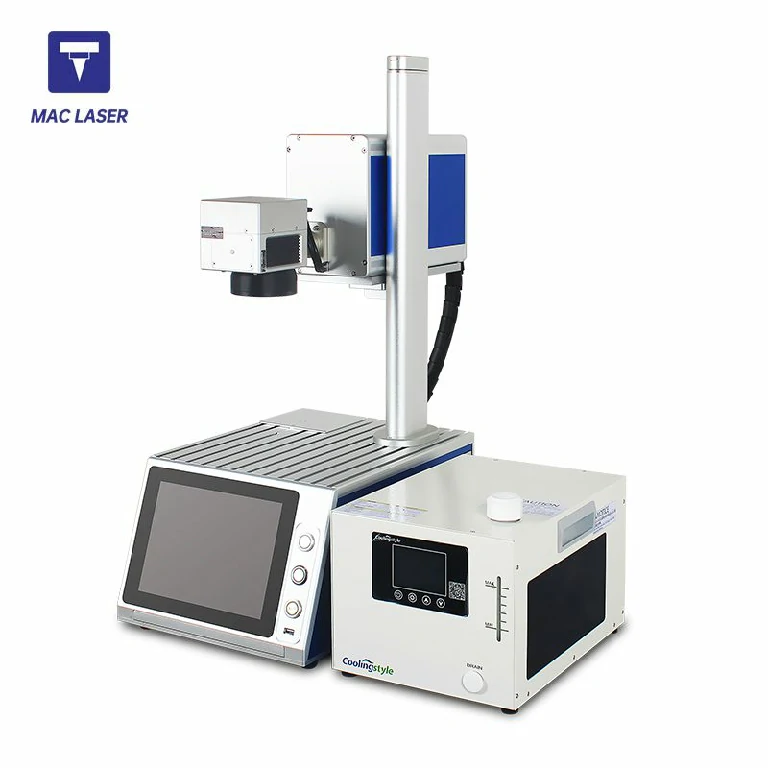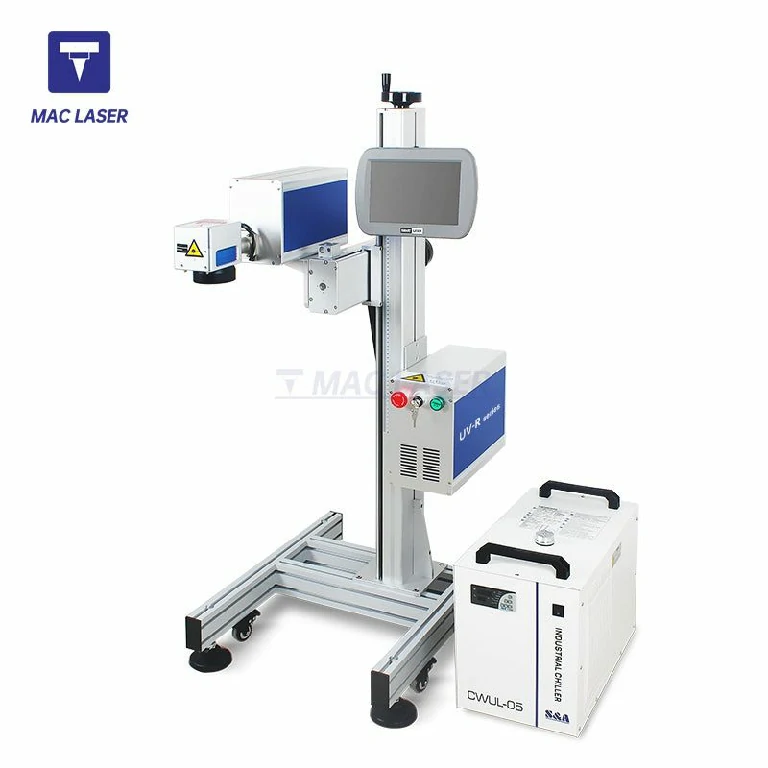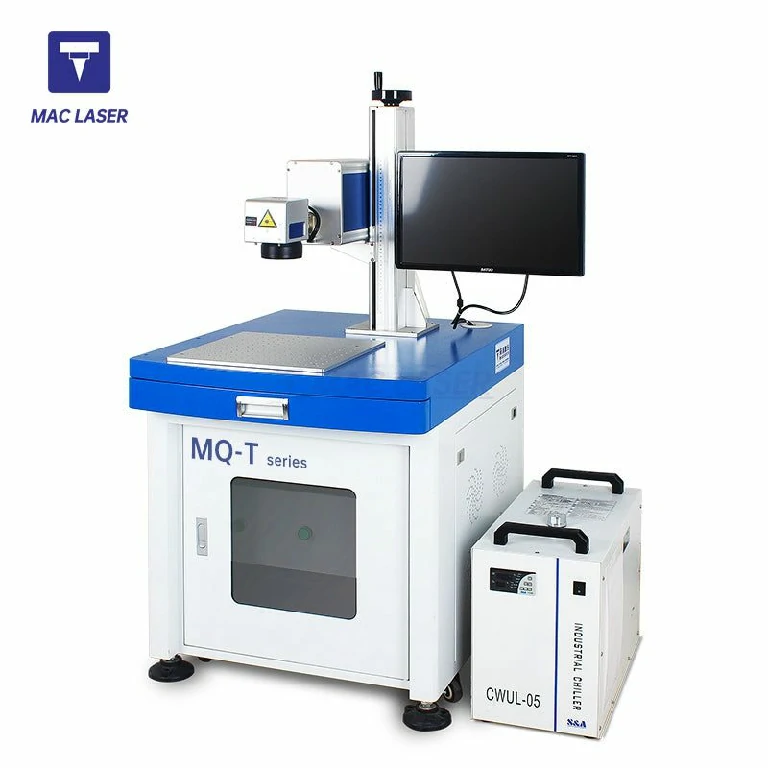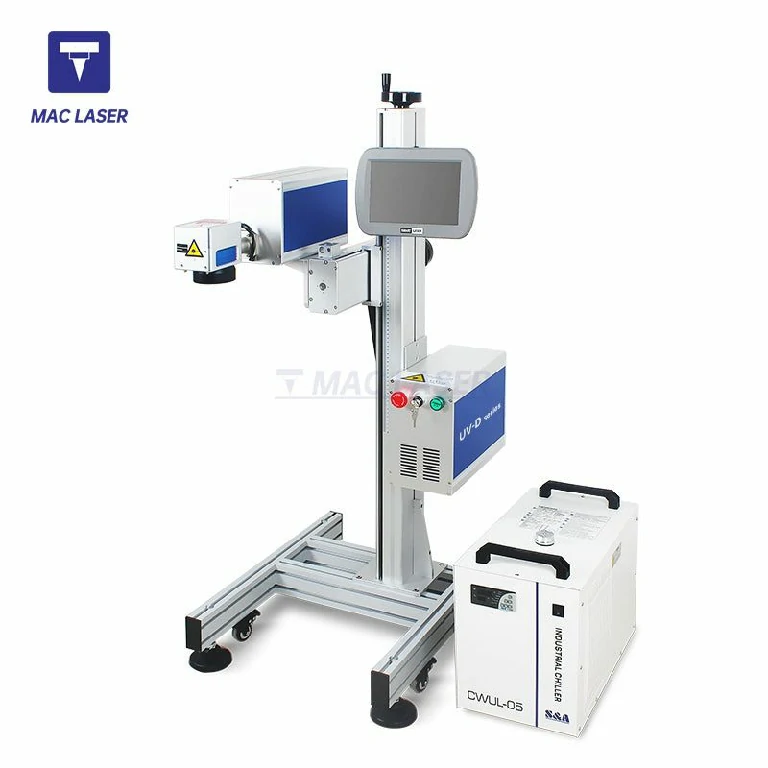


LASER MARKING GLASS: THE ULTIMATE GUIDE FOR PRECISION ENGRAVING
Laser marking glass is a simple and precise way to create impressive engravings on glass, mirrors, and crystal. The process allows for stunning matte finishes and fine details, making it ideal for engraving logos, text, or photos.
With the help of a rotary engraving attachment, engraving on wine glasses, beer steins, bottles, and mirrors is particularly easy. Personalized engravings on glass are a great gift for special occasions, as each piece of glass laser engraving is unique and memorable. Give a personalized touch to your glassware with the art of laser engraving.
RECOMMENDED LASER SOLUTIONS



MZF-B Portable UV Laser Marking Machine



UV-R Serial Flying UV Laser Marking Machine



MQ-T UV Laser Marking Machine



UV-D serial UV flying laser marking machine
Why Choose Laser Machines for Glass Marking?
HIGH PRECISION
Laser marking on glass offers unmatched precision compared to other marking methods. With the ability to create marks as small as a few microns, laser marking can achieve high levels of detail and accuracy.
DURABILITY
Laser marks on glass are highly durable and resistant to wear, fading, and scratching. This makes laser marking a suitable solution for products that are exposed to harsh environments or frequent handling.
VERSATILITY
Laser marking on glass can be used on a wide range of glass materials, including borosilicate glass, tempered glass, and soda-lime glass. It can also be used to create various mark types, including text, logos, serial numbers, and barcodes.
SPEED AND EFFICIENCY
Laser engraving on glass is a fast and efficient process, with the ability to create high-quality marks in a matter of seconds. This makes it a suitable solution for high-volume production environments.
Glass You Can Mark
The high precision and non-contact nature of the laser make it an excellent choice for marking delicate and fragile materials like glass. The laser creates a permanent mark on the glass surface without compromising its integrity.
Glass products that can be marked using laser engraving include wine glasses, beer mugs, shot glasses, vases, and other decorative items. Laser marking is also used to mark serial numbers and other identification information onto glass parts used in the automotive, aerospace, and electronics industries.
Types of Lasers for Glass Marking
CO2 Lasers: CO2 lasers are the most widely used lasers for glass marking due to their ability to produce high-quality marks on a variety of glass types. These lasers operate in the infrared wavelength and are typically used for marking glass that is not coated or painted. CO2 lasers are capable of producing detailed designs and high-quality text on glass surfaces.
Fiber Lasers: Fiber lasers are another type of laser that is commonly used for glass marking. These lasers operate in the visible and near-infrared spectrum and are ideal for marking glass that is coated or painted. Fiber lasers produce high-quality marks on glass surfaces and are known for their fast marking speeds.
UV Lasers: UV lasers are another type of laser used for glass marking, specifically for high-precision applications. These lasers operate in the ultraviolet spectrum and produce marks that are resistant to high temperatures, chemicals, and abrasion. UV lasers are ideal for marking glass used in medical devices, electronic displays, and automotive applications.
Factors to Consider When Laser Marking on Glass
Glass Composition and Thickness: The composition and thickness of the glass are essential factors to consider when laser marking on glass. Different glass types have varying melting points, which affects the amount of energy required to mark the surface. Thicker glass requires more energy and marking time compared to thinner glass. Knowing the glass composition and thickness helps in selecting the appropriate laser type and settings for optimal results.
Surface Coatings: Surface coatings on glass can impact the quality of the mark produced by the laser. Coatings like anti-reflective and anti-glare coatings can scatter the laser beam, resulting in uneven marking. It is important to test the glass surface and coating before marking to determine the optimal laser settings.
Marking Speed and Depth: Marking speed and depth affect the quality of the mark produced by the laser. Higher marking speeds can result in less precise and shallow marks, while slower speeds can produce deeper and more accurate marks. Finding the optimal balance between speed and depth is important for achieving high-quality marks.
FAQs
1. Is laser engraving on glass a permanent solution?
Yes, laser engraving on glass is a permanent solution that offers durable and long-lasting marks.
2. What types of glass can be laser marked?
Various types of glass can be laser marked, including borosilicate glass, tempered glass, and soda-lime glass.
3. What is the difference between CO2 and UV lasers for glass marking?
CO2 lasers are suitable for marking on glass surfaces with low to medium precision requirements, while UV lasers are ideal for high-precision applications.
4. Can laser marking on glass be used in the automotive industry?
Yes, laser marking on glass is commonly used in the automotive industry for marking glass components like windshields, side windows, and rearview mirrors.

